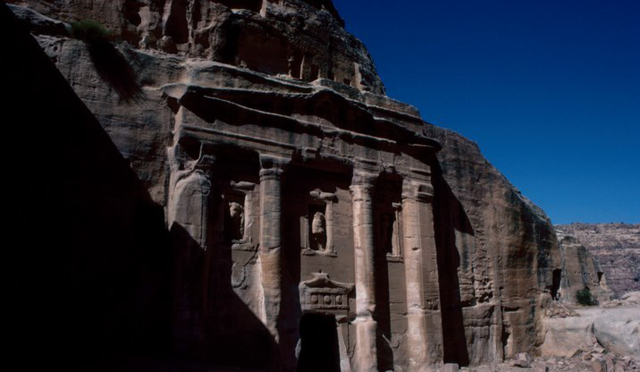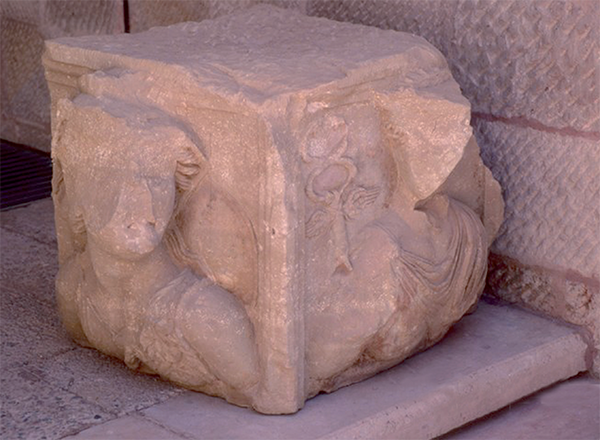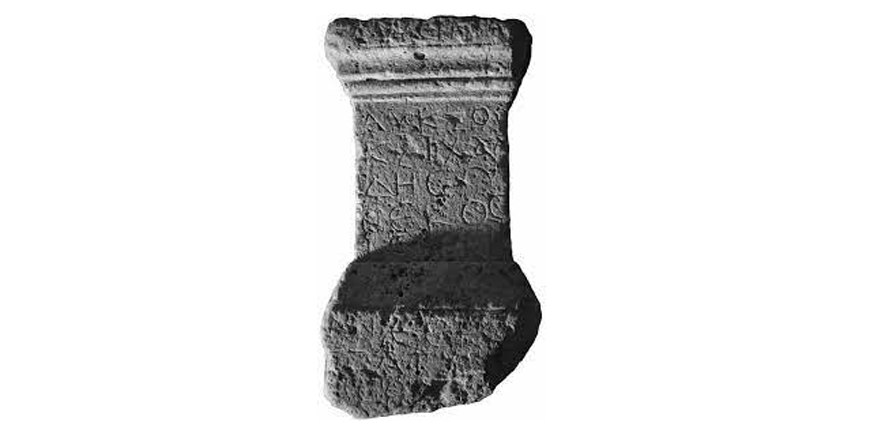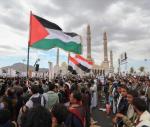You are here
Sarcophagi or Stelai: Delving into funerary rituals in ancient Levant
By Saeb Rawashdeh - Apr 16,2024 - Last updated at Apr 16,2024

A 3rd century AD sarcophagus in Umm Qais (Photo courtesy of ACOR)
During the ancient times, rich individuals were buried in sarcophagi within the territory of Transjordan and the sarcophagi represented monuments with funerary portraits, either carved in the round on lids or in relief on the short or long sides of the coffins.
Sarcophagi became trendier after the Roman occupation of the Nabataean Kingdom in 106 AD, as the wealthiest patrons would have had their marble sarcophagi brought over great distances from specialised workshops in Attica or Asia Minor.
The less affluent citizens would hire local sculptors to carve sarcophagi in local limestone or basalt.
“One may mention here a couple of basalt sarcophagi from the 2nd or 3rd centuries AD.
The first, from Kharga,has two busts in a recessed panel,male on the left and female on the right,each clad in a chiton (long woollen tunic)underneath a himation (an outer garment),and can be dated to the Severan period on account of the lady’s coiffure arranged after that of Septimius Severus’ wife Julia Domna,” said Bilal Annani from the University of Paris.
The second, from Irbid,features on its long side rectangular crudely draped busts on either side of a blank clypeus (a shield), characterised by small heads with ill-defined features atop elongated necks. This sarcophagus is displayed in front of the Museum of National Heritage inside Yarmouk University campus in Irbid.
“A number of these locally-produced sarcophagi, nevertheless, bear testimony to an admirable level of craftsmanship and denote an intention of verisimilitude,as evidenced by a sarcophagus found in Abila-Quwayliba on which a mature man, sporting a paludamentum [a cloak worn by politicians and military commanders in Ancient Rome]that covers his torso, is represented in bust-form between a couple of rosettes and a pair of torch-bearingwinged Erotes,” Annan elaborated.
A stele or occasionally stela (plural: stelas or stelæ) when derived from Latin, is a stone or wooden slab, and it represented a monument in the ancient time.
Image-bearing stelai seem to have derived from their archaic antecedents, i.e.plain stone slabs set vertically in the ground to signal the presence of a tomb.
“Most stelai bore an epitaph in Greek,Latin, Aramaic, or North Arabian scripts, usually mentioning the name and immediate genealogy of the deceased and their age, or for the more elaborate ones, an epigram lamenting the loss of the relative and extolling his or her virtues and qualities,” Annan noted, adding that portrait stelai would have been displayed upright within the funerary enclosure, yet very few, if any, of these documents, which would have been easily displaced by looters or upon the reuse of the tomb, were found in their original archaeological context.
There is a limestone stele of Diodora, daughter of Herakleitos, from Pella and dated to the 2nd or 3rd century AD, whose decapitated bust shows achiton ornamented with clavi(tunic), Annan underscored.
Related Articles
AMMAN — A funerary portrait serves as the lasting image through which the deceased hoped to be remembered by posterity for all eternit
AMMAN — Busts are among the most widespread forms of funerary depictions of a deceased individuals.
Al Qunayyah is a site located approximately 10 km southeast of Jerash, and its ancient name is still unknown.



















